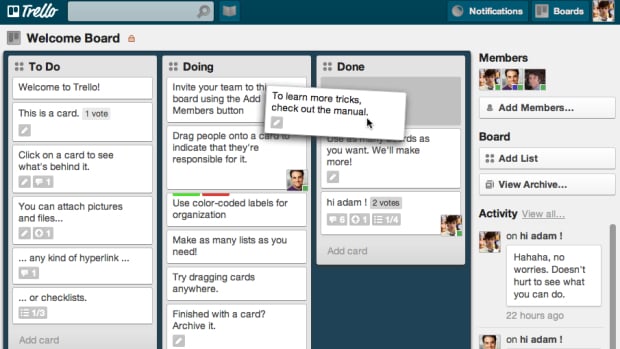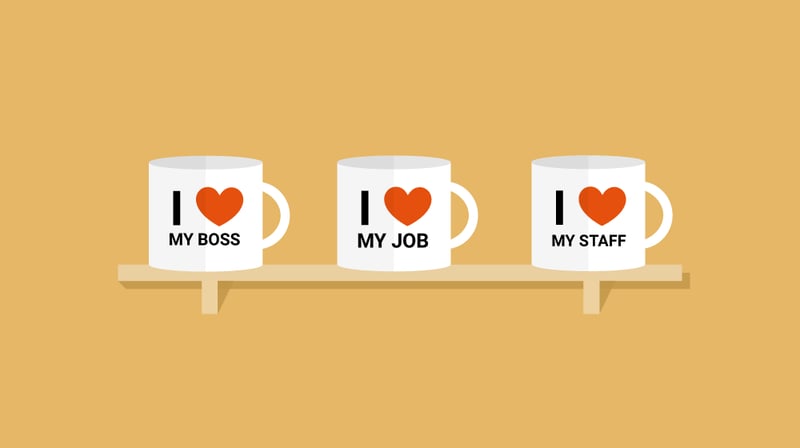At Presence, we’re hooked on work (in a good way).
Our organization allows us to be creative, embrace accountability flows, and praise individual successes easily.
We know work is essential to our well-being as humans and when we hit our goals on specific projects, it feels good.
You know that feeling after eating a warm chocolate chip cookie right after it’s baked or a fresh cup of coffee? It’s a similar feeling we can achieve at work. For some, it’s weird to think that work can give us these warm feelings of joy, but did you know it’s actually hard-wired in our brains?
Addicted to Work
The smartest managers in student affairs harness the power of neuroscience to attract and retain the best talent in the field.
Called a ‘dopamine rush’, when we succeed at anything in life, including our job, we release chemicals in our brain through neurotransmitters. When we accomplish something that holds a lot of value, we release dopamine and feel intrinsically motivated to do it again.
A close friend who is a freelance writer talks about this phenomenon. She explains that when she publishes a blog post and it goes viral, she feels great (a result of increased dopamine). Other people describe this feeling in relation to getting a certain amount of ‘likes’ on Facebook or ‘double taps’ on Instagram.

Our brain remembers this feeling and pushes us to re-create a similar feeling; it motivates us to do better based on past successes.
Whether you have a team who’s worked together for two or twenty years, a tiny team or a large department, or you’re hiring, like Presence, you can use these techniques to create an increased sense of motivation and tap into your team’s talent through these easy neuroscience hacks.
Structure 1:1s
One piece of neuroscience suggests that when we provide employees with any type of feedback and celebrate successes first, we tap into an emotional state of success.
Creating personal relationships with staff members one-on-one is key when identifying their strengths and understanding how they can contribute to the team overall.
Ben Horowitz, author of A Good Place to Work explains why 1:1 time is necessary,
If you are an employee, how do you get feedback from your manager on an exciting, but only 20% formed idea that you’re not sure is relevant without sounding like a fool? How do you point out that a colleague that you do not know how to work with is blocking your progress without throwing her under the bus? How do you get help when you love your job, but your personal life is melting down? Through a status report? On email? Yammer? Asana? Really? For these and other important areas of discussions, one-on-ones can be essential.
Many student affairs professionals use a 1:1 model when meeting with people they supervise. When it comes to 1:1’s, I’ve heard one of two things: people either hate them and don’t see the point or people love them and wish they had more time.
Managers feel this is the time where they set the agenda and ask all of the questions in the 1:1 (I’ll admit, I made this mistake in the past). A manager should consider a few ways to set up the meeting and send a flexible or example agenda to an employee ahead of time. Particularly for introverts, this structure may be incredibly helpful and make a huge difference in a supervisor/supervisee relationship.
Here’s an example of a structured 1:1 agenda:
[5 minutes]: Celebrate achievements from the past week
[5 minutes]: Identify 2 challenges and ideas of how to address them
[10 minutes]: Share feedback (both)
[2-3 minutes]: Clarify goals and identify next steps
Where I’ve seen managers go wrong is using this time set aside for an employee and talking about themselves. Have you ever recorded yourself in a meeting and played it back? Listening to our own words, tone, and conversations allow for critical reflection and empowers us to change the way we do things. 1:1 meetings with employees should be about 90% of the employee talking and the manager listening.
Reverse Mentor
Many professional organizations like NASPA and ACPA often discuss and show the value of structured mentoring programs at conferences and regionally.
Reverse mentoring works well when new professionals are paired with senior leaders on campus. When a new professional has someone who truly cares about their success, it can help increase transparency in an organization and lessen divisional hierarchy.
An example is pairing a Residence Director with a Vice President of Student Affairs. A new entry-level residence director may have more experience with technology and can teach the VPSA on best practices on how to implement the new NASPA/ACPA technology competency. Reverse mentoring creates relationships that may not otherwise exist and helps break down stereotypes. People that have been at organizations an extended amount of time may think new professionals want to change things for the sake of newness. New professionals may believe professionals who are at institutions for a long amount of time are resistant to change.
Alexia Vernon, President of Catalyst for Action, describes reverse mentoring as a way to build trust and bring generations together,
“We need to think about reverse mentorship and pairing young people with seasoned executives. We need to stop thinking about it as an ‘us versus them’ conversation. It’s a two-way street.”
Building a strong foundation through reverse mentoring helps with employee/mentee retention. Use questions that peel back layers of institutional history, failures, and why ‘things are done a certain way’ to help new professionals adapt to a new workplace culture. Here are a few examples Ben Horowitz suggests:
- If we could improve in any way, how could we do it?
- What’s fun about working here? What’s not fun?
- Who is really kicking ass in the company this week or who do you admire in our division/institution?
- If you were me, what changes would you make?
- Are you happy working here?
- What’s the biggest opportunity we’re missing out on?
Having support outside of one’s immediate circle can allow for fruitful individual connections and continue to push an organization forward to broader goals. When we engage in meaningful conversations, we understand who we are, our place or role in an organization and can provide us with a valuable toolbox to reward and care for others.
Track Productivity
Explore student affairs productivity tools that allow you to stay in sync with your team rather than guzzling time through another meeting. Productivity tends to be focused on each individual, where it’s now growing to become a team effort by motivating each other through sharing.
One of the softwares we utilize at Presence to track productivity is Trello, a collaboration tool that organizes projects and tasks into team boards. It shows us what is being worked on and who’s working on a particular project. There is plenty of Trello inspiration to go around. It can be used for group communication, facilitating feedback, employee or departmental manuals, onboarding, organizing student affairs trainings and, as mentioned above, amazingly structured one-on-ones.

The book, The Winner Effect by Ian Robertson reinforces these findings of using feedback loops to increase team motivation. Robertson explains what it takes to be a winner by accomplishing tasks and how the brain physically changes throughout the process.
A platform like Trello can show where employees may be engaging in monotonous work, over and over again (where they have decreased dopamine levels). It can raise red flags by showing where employees are spending the most time and provide an opportunity for managers to change projects or tasks. Setting the same goals week after week may not provide personal satisfaction or the ‘dopamine buzz’ for an employee expecting the same task.
Your Thoughts!
How do you work towards building the best team in your role?
Have you been involved in a reverse mentoring program before?
What are other ways you inspire motivation among your team?
We’d love to hear your thoughts on this topic. Tweet us your ideas and answers to @CheckImHere! Thanks for reading.
P.S. If you liked this post, you may also like Employee Retention in Student Affairs: How to Build & Keep Talent through the implementation of effective feedback.
References:
Horowitz, J. https://a16z.com/2012/08/30/one-on-one/a





